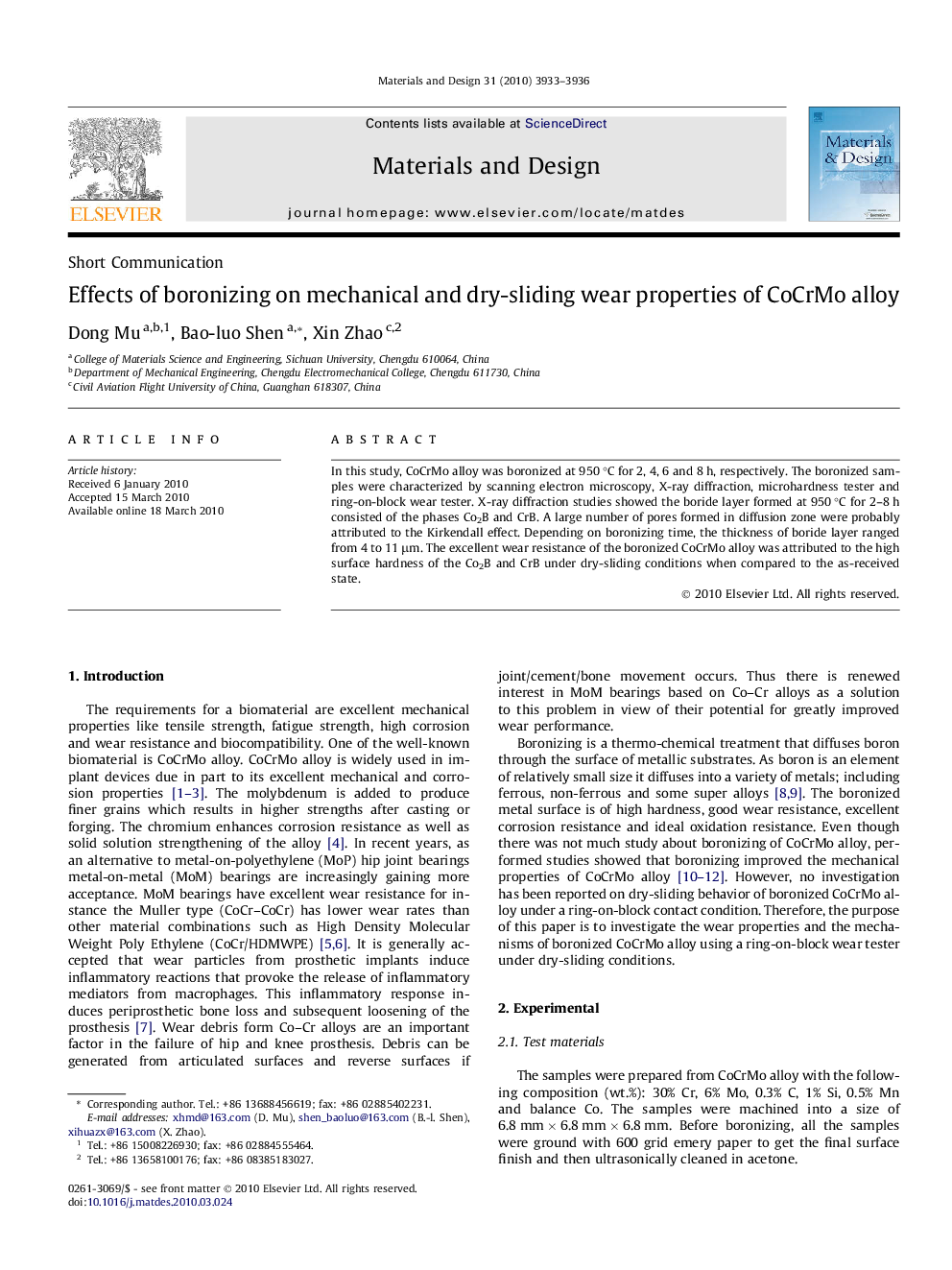| Article ID | Journal | Published Year | Pages | File Type |
|---|---|---|---|---|
| 831914 | Materials & Design (1980-2015) | 2010 | 4 Pages |
Abstract
In this study, CoCrMo alloy was boronized at 950 °C for 2, 4, 6 and 8 h, respectively. The boronized samples were characterized by scanning electron microscopy, X-ray diffraction, microhardness tester and ring-on-block wear tester. X-ray diffraction studies showed the boride layer formed at 950 °C for 2–8 h consisted of the phases Co2B and CrB. A large number of pores formed in diffusion zone were probably attributed to the Kirkendall effect. Depending on boronizing time, the thickness of boride layer ranged from 4 to 11 μm. The excellent wear resistance of the boronized CoCrMo alloy was attributed to the high surface hardness of the Co2B and CrB under dry-sliding conditions when compared to the as-received state.
Related Topics
Physical Sciences and Engineering
Engineering
Engineering (General)
Authors
Dong Mu, Bao-luo Shen, Xin Zhao,
